This document discusses why studying computers is important and provides an overview of computer hardware, software, data, and users. It notes that studying computers provides skills that are useful in many aspects of life and improves employment prospects. It then defines key computer components like the CPU, memory, storage, input and output devices. It also explains the basic functions of hardware, software, data, and how users interact with the system.
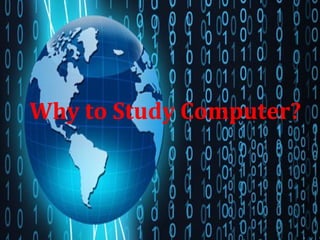






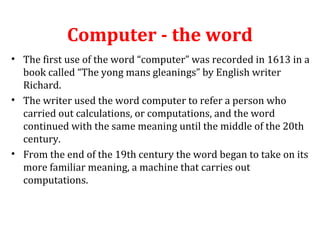



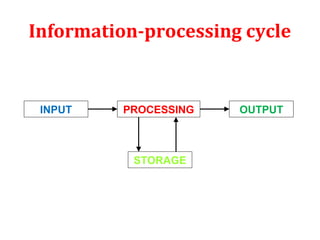




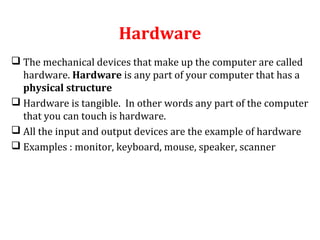



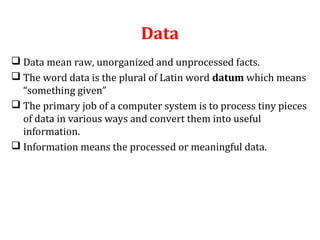




![Basic Components of Computer
CCoommmmuunniiccaattiioonn U Unniitt
IInnppuutt U Unniitt MMeemmoorryy U Unniitt OOuuttppuutt U Unniitt
Control Unit AL Unit
Central Processing Unit [CPU]](https://image.slidesharecdn.com/introductiontocomputer-140928070009-phpapp02/85/Introduction-to-computer-26-320.jpg)









